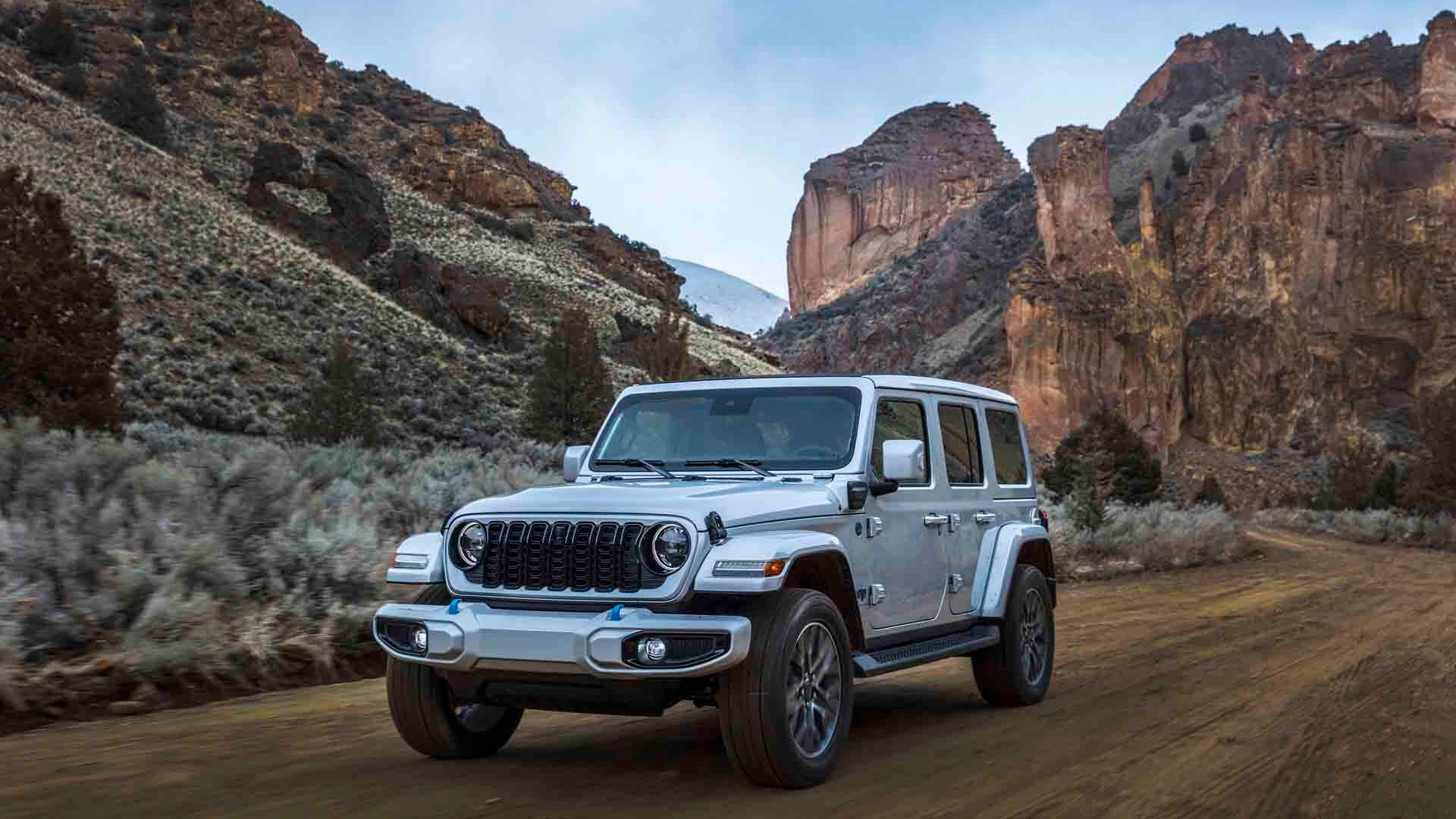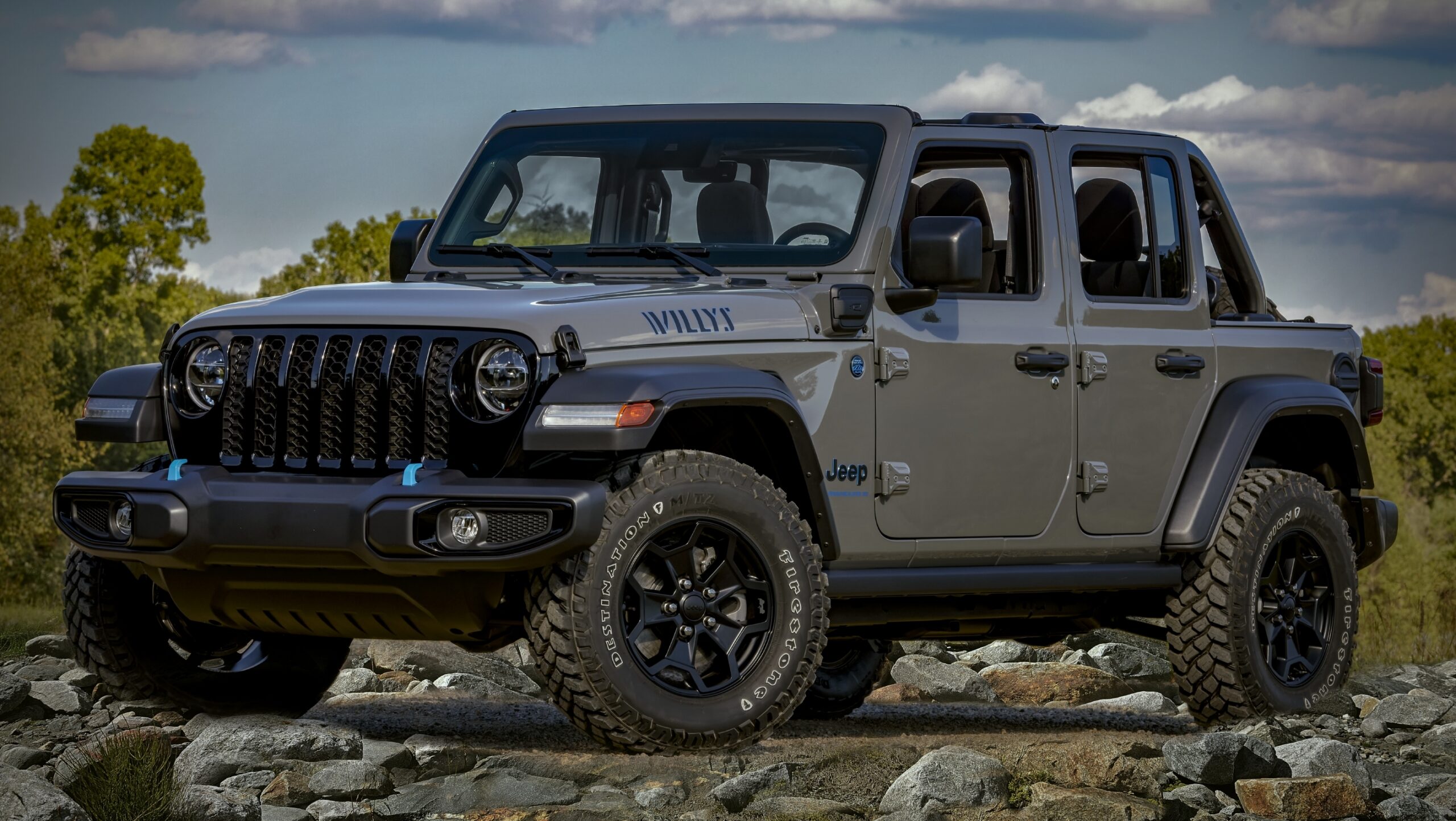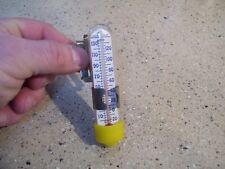Jeep Wrangler 35 Inch Tires: The Ultimate Guide to Off-Road Dominance and Aesthetic Appeal
Jeep Wrangler 35 Inch Tires: The Ultimate Guide to Off-Road Dominance and Aesthetic Appeal jeeps.truckstrend.com
For many Jeep Wrangler enthusiasts, the journey to customization often culminates in one significant upgrade: fitting 35-inch tires. This modification isn’t just about aesthetics; it’s a profound statement of intent, unlocking superior off-road capabilities and transforming the Wrangler’s stance into an even more imposing presence. Moving to 35-inch tires is a popular choice for a reason, offering an optimal balance of increased ground clearance, enhanced traction, and a classic, aggressive look that perfectly complements the Wrangler’s iconic design. However, it’s a decision that comes with a set of considerations and necessary accompanying modifications to ensure performance, safety, and longevity.
This comprehensive guide will delve into every aspect of equipping your Jeep Wrangler with 35-inch tires, from the compelling reasons behind the upgrade to the technical requirements, installation process, and ongoing maintenance.
Jeep Wrangler 35 Inch Tires: The Ultimate Guide to Off-Road Dominance and Aesthetic Appeal
Why 35-Inch Tires? The Allure of the Upgrade
The appeal of 35-inch tires on a Jeep Wrangler is multi-faceted, extending beyond mere visual enhancement:
- Superior Ground Clearance: This is perhaps the most significant functional benefit. Larger tires effectively lift the vehicle’s axles and undercarriage higher off the ground, reducing the risk of scraping over rocks, logs, or deep ruts on challenging trails. More ground clearance means fewer obstacles are truly "obstacles."
- Enhanced Traction: With a larger contact patch and often more aggressive tread patterns, 35-inch tires provide significantly improved grip on diverse terrains – from loose dirt and mud to slippery rocks and deep snow. This translates to better control and confidence when off-roading.
- Improved Approach, Departure, and Breakover Angles: While a lift kit primarily affects these angles, larger tires contribute by raising the vehicle’s lowest points, allowing the Wrangler to tackle steeper inclines, descents, and crest obstacles with less likelihood of hanging up.
- Aesthetic Dominance: Let’s be honest, 35-inch tires simply look fantastic on a Wrangler. They fill the wheel wells perfectly, giving the vehicle a more proportionate, rugged, and aggressive stance that aligns with its adventurous spirit.
- Greater Damping and Ride Comfort (Off-Road): The increased air volume within larger tires can provide a cushioning effect, absorbing impacts from bumps and uneven terrain, which can lead to a more comfortable ride off-road.
![]()
Understanding the Requirements: What You Need for 35s
Simply bolting on 35-inch tires isn’t advisable or often even possible. Several critical modifications are necessary to accommodate their size and ensure optimal performance and safety:
1. Lift Kit
A lift kit is almost universally required to prevent the 35-inch tires from rubbing against the fender flares or suspension components, especially during suspension compression or steering.

- Recommended Lift Height: For most JK and JL Wranglers, a 2.5-inch to 3.5-inch suspension lift is typically sufficient to clear 35-inch tires. The exact height can vary based on the specific tire’s true measured height (which can differ slightly from the advertised size), wheel backspacing, and fender type.
- Types of Lifts: Options range from budget-friendly spacer lifts (coil spacers) to comprehensive suspension systems that include new coil springs, shocks, control arms, and track bars. For serious off-roading, a full suspension system is highly recommended for improved articulation and ride quality.
2. Wheel Backspacing
This is crucial for preventing rubbing issues. Backspacing refers to the distance from the mounting surface of the wheel to the wheel’s inner edge.
- Recommended Backspacing: For 35-inch tires, wheels with 4.5 inches or less of backspacing are generally recommended. This pushes the wheel and tire assembly further out from the vehicle’s frame, providing necessary clearance for the tire’s inner sidewall. Stock wheels typically have higher backspacing and will cause rubbing.
3. Fender Clearance
Even with a lift, aggressive off-roading can sometimes lead to rubbing, particularly with stock fenders.
- Solutions: Flat fenders or high-clearance fenders offer additional room in the wheel wells, allowing for greater articulation without interference. For those not wanting to replace fenders, a smaller lift (2.5-inch) combined with careful wheel choice and perhaps minor trimming might suffice for street use, but off-road articulation will be limited.
4. Steering Components
Larger, heavier tires put more stress on steering components.
- Potential Upgrades: Depending on your Wrangler’s generation and intended use, you might consider upgrading your steering stabilizer, tie rod, and drag link for increased durability and improved handling feel.
5. Gearing
One of the most overlooked yet critical aspects is re-gearing. Taller tires effectively change your final drive ratio, making your engine work harder.
- Impact: Without re-gearing, you’ll experience noticeable power loss, sluggish acceleration, reduced fuel economy, and increased strain on the transmission. The engine will constantly hunt for the right gear, especially on inclines.
- Recommended Ratios:
- JK Wrangler (3.6L Pentastar): For 35s, 4.56 or 4.88 gear ratios are commonly recommended, depending on whether you have an automatic or manual transmission and your driving habits.
- JL Wrangler (3.6L Pentastar/2.0L Turbo/392 HEMI): 4.56, 4.88, or even 5.13 ratios might be considered, again based on engine, transmission, and desired performance.
- Cost: Re-gearing is a significant investment but pays dividends in drivability and component longevity.
6. Brakes
Larger tires increase rotational mass, requiring more stopping power.
- Consideration: While not always immediately necessary for street driving, an upgraded brake system (larger rotors, calipers, or pads) can significantly improve braking performance and safety, especially if you carry heavy loads or frequently venture off-road.
Choosing Your 35-Inch Tires: Types and Considerations
Selecting the right 35-inch tire involves balancing your primary use case with performance characteristics.
- All-Terrain (AT) Tires: Ideal for daily drivers who also frequent moderate trails. They offer a good balance of on-road comfort, noise reduction, and off-road traction.
- Mud-Terrain (MT) Tires: Designed for extreme off-road conditions, especially mud, rocks, and loose terrain. They feature aggressive tread patterns and large voids for self-cleaning. Expect more road noise and potentially faster wear on pavement.
- Hybrid (RT – Rugged Terrain) Tires: A newer category bridging the gap between AT and MT. They offer more aggressive styling and off-road capability than ATs, with better on-road manners than full MTs.
- Load Range: Ensure the tire’s load range (e.g., C, D, E) is appropriate for your Wrangler’s weight and intended use. A higher load range generally means a stiffer sidewall and potentially a harsher ride but greater durability.
- Tread Pattern: Consider the specific terrains you’ll encounter most often. Open, aggressive patterns excel in mud and loose dirt, while tighter patterns are better for rocks and on-road stability.
- Brand Reputation: Stick with reputable tire manufacturers known for quality, durability, and good customer service.
Installation Guide (Simplified): The Process of Going Big
While professional installation is recommended, understanding the steps is key:
- Pre-Installation Checks: Verify all components (lift kit, wheels, tires) are correct and accounted for.
- Lift Kit Installation: This involves removing stock suspension components and installing the new springs, shocks, control arms, and other hardware as per the lift kit instructions.
- Tire Mounting and Balancing: Mount the new 35-inch tires onto your chosen aftermarket wheels and ensure they are properly balanced to prevent vibrations.
- Install Wheels and Tires: Bolt the new wheel/tire assemblies onto the Wrangler.
- Alignment: A critical step after any suspension modification. An alignment ensures proper steering geometry and prevents premature tire wear.
- Speedometer Calibration: Crucial for accurate speed and mileage readings. Larger tires make your speedometer read slower than your actual speed. This can be corrected using a Tazer, Flashcal, or by a dealership.
- TPMS Calibration: If your new wheels don’t have TPMS sensors, or if they need recalibration, address this to avoid dash warning lights.
- Reinforced Tire Carrier: Your stock tailgate and tire carrier are not designed to safely support the weight of a 35-inch spare tire. An aftermarket reinforced tire carrier is highly recommended to prevent tailgate damage and ensure safety.
Driving Dynamics: On-Road and Off-Road Performance
Equipping 35-inch tires fundamentally alters your Wrangler’s driving characteristics.
- On-Road:
- Ride Quality: Can become slightly firmer or bouncier depending on tire choice, load range, and lift kit quality. Proper tire pressure is key.
- Handling: Increased unsprung weight can lead to a less nimble feel. Steering might feel heavier.
- Fuel Economy: Expect a noticeable decrease in MPG due to increased rolling resistance, weight, and aerodynamic drag. Re-gearing helps mitigate the performance loss but not necessarily the fuel economy hit.
- Noise: More aggressive tread patterns will generate more road noise, especially MT tires.
- Off-Road: This is where 35s truly shine.
- Rock Crawling: Excellent grip and ground clearance make tackling technical obstacles significantly easier.
- Mud/Sand: Aggressive treads bite effectively, and the larger diameter helps maintain momentum.
- Articulation: When combined with a good lift, 35s allow for maximum suspension travel, keeping tires on the ground for traction.
Maintenance and Longevity for 35-Inch Tires
Proper maintenance is vital for maximizing the lifespan and performance of your 35-inch tires and related components:
- Tire Pressure: Crucial for ride quality, tire wear, and handling. The "chalk test" can help determine the optimal pressure for your specific setup, but generally, it will be lower than stock recommendations (e.g., 28-32 PSI).
- Regular Rotation: Rotate your tires every 5,000-7,000 miles to ensure even wear and extend their life.
- Frequent Alignment Checks: Given the stresses of larger tires and off-road use, have your alignment checked regularly.
- Suspension and Steering Inspection: Periodically inspect all lift kit components, steering linkage, and ball joints for wear or damage.
Potential Challenges and Solutions
While the benefits are clear, be aware of potential challenges:
- Rubbing: Even with a lift, aggressive off-roading or certain wheel/tire combinations can cause rubbing. Solutions include minor fender trimming, flat fenders, or bump stop extensions.
- Reduced Fuel Economy: An unavoidable consequence. Re-gearing helps performance but won’t fully offset the MPG loss.
- Wear on Drivetrain Components: Heavier tires put more stress on axles, driveshafts, and differentials. Re-gearing helps, but severe off-road abuse may necessitate component upgrades down the line.
- Legal Considerations: Some regions have laws regarding tire protrusion beyond fenders or overall vehicle height. Check local regulations.
Estimated Cost Table for Jeep Wrangler 35-Inch Tire Conversion
Please note that these are estimated price ranges and can vary significantly based on brand, quality, specific vehicle model (JK/JL), location, and labor rates. Always get multiple quotes.
| Component Category | Description | Estimated Price Range (USD) |
|---|---|---|
| 35-Inch Tires (per tire) | All-Terrain (AT) | $250 – $400 |
| Hybrid/Rugged Terrain (RT) | $300 – $450 | |
| Mud-Terrain (MT) | $350 – $550+ | |
| Lift Kit (2.5-3.5 inch) | Budget Spacer Lift (Basic) | $200 – $600 |
| Mid-Range Suspension System (Springs/Shocks) | $800 – $2,000 | |
| Premium Full Suspension System (Coil-overs, Control Arms, etc.) | $2,500 – $5,000+ | |
| Aftermarket Wheels (set of 5) | With appropriate backspacing (e.g., 4.5" or less) | $800 – $2,000 |
| Re-Gearing (Parts & Labor) | Front & Rear Axles, new gears, master install kits, labor | $1,500 – $3,000+ |
| Installation Labor | Lift Kit Installation | $400 – $800 |
| Tire Mounting & Balancing | $100 – $250 | |
| Alignment | Post-lift alignment | $100 – $200 |
| Speedometer Calibration | Using a programmer (e.g., AEV ProCal, Tazer) or dealership service | $150 – $350 |
| Reinforced Tire Carrier | For spare 35-inch tire (tailgate mounted or bumper mounted) | $400 – $1,000+ |
| Optional Upgrades | Flat Fenders (set of 4) | $300 – $1,000 |
| Upgraded Steering Components (Tie Rod, Drag Link) | $300 – $800 | |
| Big Brake Kit (Front/Rear) | $800 – $2,000+ | |
| Total Estimated Investment | (Minimum for basic setup to comprehensive build, excluding optional upgrades) | $3,000 – $10,000+ |
Frequently Asked Questions (FAQ)
Q1: Can I run 35-inch tires on a stock Jeep Wrangler without a lift?
A1: Generally, no. While some very specific wheel/tire combinations might barely fit for street driving, you will almost certainly experience significant rubbing during turns, suspension compression, or any off-road articulation. A lift kit (minimum 2.5 inches) and proper wheel backspacing are essential.
Q2: Do I have to re-gear my Jeep Wrangler for 35-inch tires?
A2: While not strictly mandatory for the tires to fit, re-gearing is highly recommended for optimal performance, drivability, and component longevity. Without it, you’ll experience a noticeable loss of power, sluggish acceleration, poor fuel economy, and increased strain on your engine and transmission.
Q3: How much lift do I need for 35-inch tires on a JK/JL Wrangler?
A3: A 2.5-inch to 3.5-inch suspension lift is typically sufficient for clearing 35-inch tires on both JK and JL models. The exact height depends on your wheel backspacing and whether you’re using stock or aftermarket flat fenders.
Q4: Will 35-inch tires significantly affect my fuel economy?
A4: Yes, absolutely. Larger, heavier tires increase rolling resistance and aerodynamic drag, leading to a noticeable decrease in miles per gallon (MPG). While re-gearing can help restore power and make the vehicle feel less sluggish, it won’t fully offset the fuel economy penalty.
Q5: What about my spare tire? Can I use my stock spare with 35s?
A5: No. You need a full-size 35-inch spare tire that matches your other four tires. Your stock spare is too small and will cause differential damage if used for extended periods. Furthermore, your stock tailgate and spare tire carrier are not designed to safely support the weight of a 35-inch tire. An aftermarket reinforced tire carrier is a crucial upgrade.
Conclusion
Upgrading your Jeep Wrangler to 35-inch tires is one of the most transformative modifications you can undertake. It dramatically enhances your vehicle’s off-road prowess, granting superior ground clearance and traction, while simultaneously delivering that quintessential, aggressive Wrangler aesthetic. However, it’s not a simple bolt-on affair. A successful conversion requires careful planning, a significant investment in a quality lift kit, appropriate wheels, and often, a critical re-gearing process. By understanding the requirements, choosing the right components, and committing to proper maintenance, you’ll unlock your Wrangler’s full potential, ready to conquer the trails with confidence and turn heads on the street. The journey to 35s is a commitment, but for many, it’s the ultimate expression of the Jeep lifestyle.



